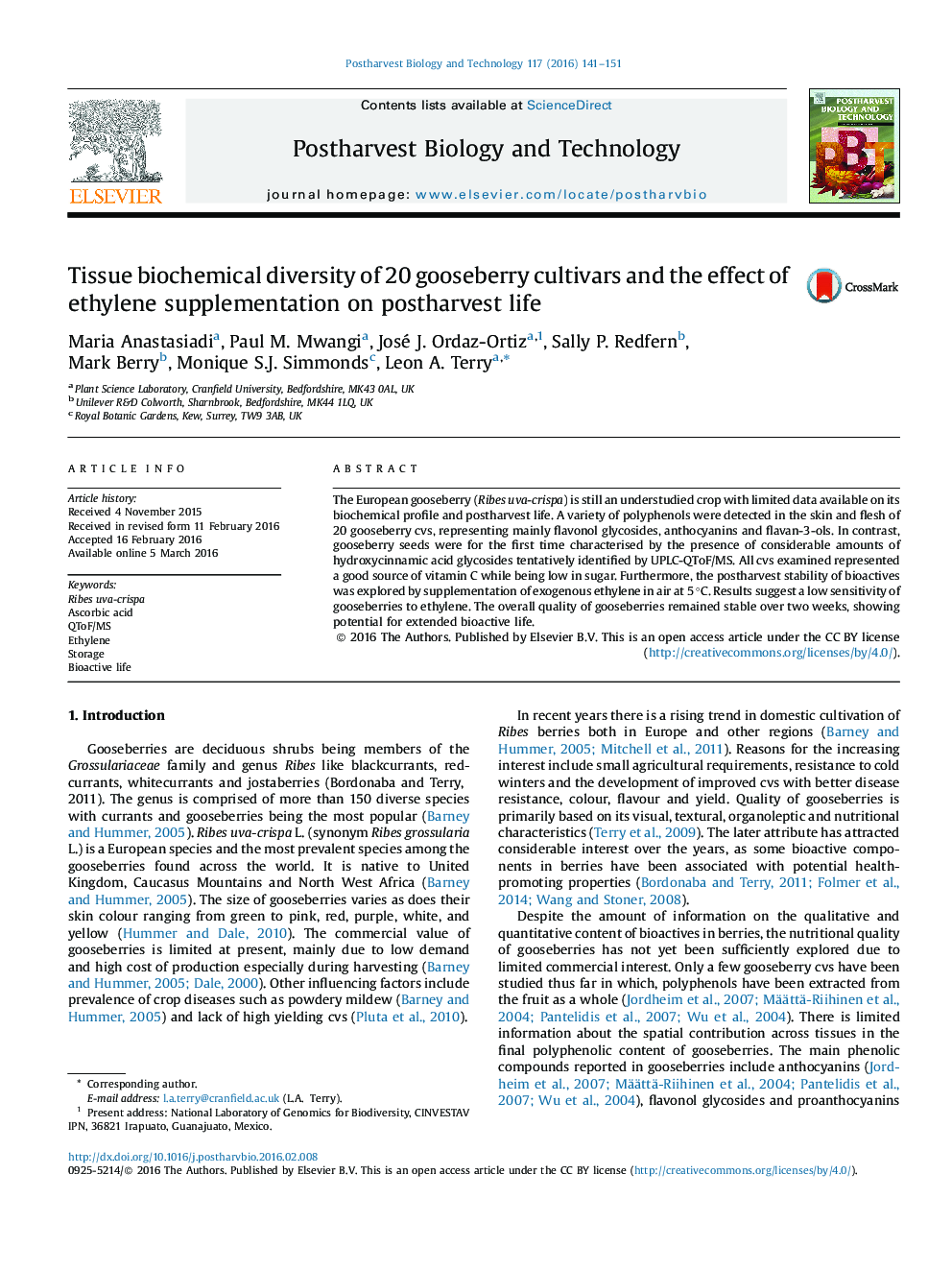| Article ID | Journal | Published Year | Pages | File Type |
|---|---|---|---|---|
| 6378589 | Postharvest Biology and Technology | 2016 | 11 Pages |
â¢Biochemical profile of English grown gooseberries and differences between tissues characterised.â¢Effects of exogenous ethylene application prior to storage were investigated.â¢'Scotch Red Rough' and 'Heart of Oak' where some of the cvs with the highest phytochemical potency.â¢Total anthocyanin content increased with storage time.â¢Exogenous ethylene did not negatively impact the quality of gooseberries
The European gooseberry (Ribes uva-crispa) is still an understudied crop with limited data available on its biochemical profile and postharvest life. A variety of polyphenols were detected in the skin and flesh of 20 gooseberry cvs, representing mainly flavonol glycosides, anthocyanins and flavan-3-ols. In contrast, gooseberry seeds were for the first time characterised by the presence of considerable amounts of hydroxycinnamic acid glycosides tentatively identified by UPLC-QToF/MS. All cvs examined represented a good source of vitamin C while being low in sugar. Furthermore, the postharvest stability of bioactives was explored by supplementation of exogenous ethylene in air at 5 °C. Results suggest a low sensitivity of gooseberries to ethylene. The overall quality of gooseberries remained stable over two weeks, showing potential for extended bioactive life.
